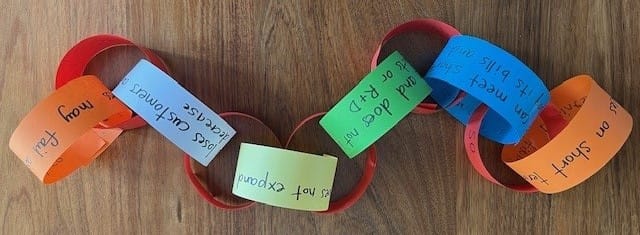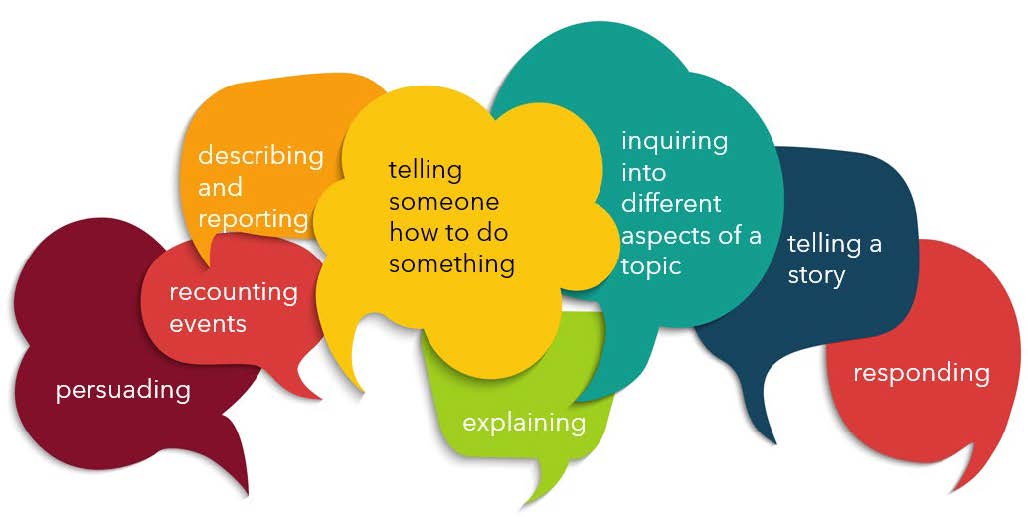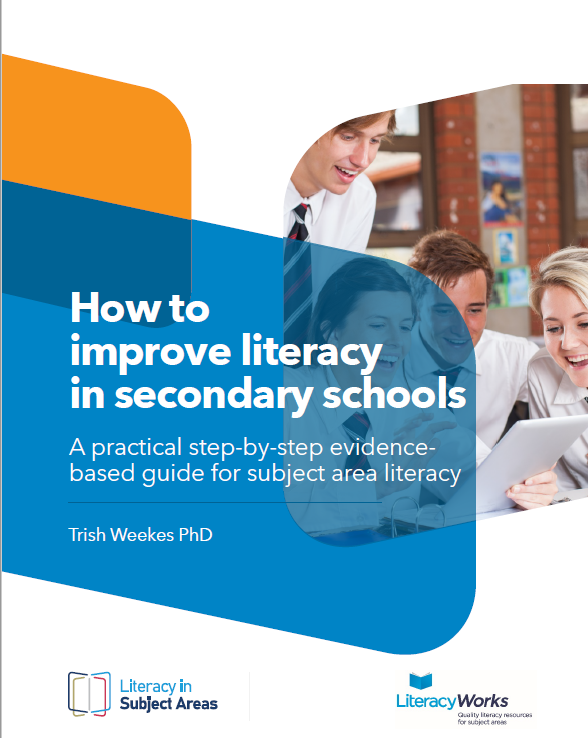Your cart is currently empty!
Category: Literacy





It’s a quick Teaching and Learning Cycle that should take around 20 minutes. Since it’s short, we will be asking students to write a short paragraph of around 3 sentences… but they will be good sentences.
2. Prepare a model text
Write a model text of a few sentences about ONE of the things e.g. one cause, one effect, one source, one design. Identify the features that students will annotate (e.g. the job of each sentence, cause and effect language for explaining, technical terms for descriptions, meaning verbs for sources ie shows, means, reveals, illustrates)
Print one paper copy of the model text for each student. You should be able to fit several on one A4 page.
Give students a piece of paper and ask students to write about the a topic/image/ stimulus without any support. This is the pre-test and it’s not supposed to be good. I’ve seen students write a few words or nothing at all for a pre-test and that’s fine.
2. Modelling
Give out the paper model texts. Read the text and ask students to annotate with the features you prepared.
3. Supported writing
Give students the second topic, second source or second design. Ask them to write a text with a peer in pairs or groups using the same features as the model text.
4. Independent writing
Give the students the first topic again, the one they did in the pre-test. That’s the independent text. Ask them to re-write their text now that they know what to do.
5. Evaluate
Ask students to swap their text with a peer and evaluate how much the text has improved. It could be longer, contain more technical terms, be more accurate. It should be a positive experience and you can discuss how much the students have improved.
If you do this activity regularly, I swear that you’ll see improvement in your students’ confidence and ability to write like subject experts.
Real improvement in student literacy takes time. A one-off literacy lesson won’t do much for your students’ results. Instead, you can set up a rhythm for literacy.
I’m not talking about a drumming lesson (although as a music teacher, that does sound like fun to me.)
Instead, I’m talking about a rhythm for incorporating reading, writing and speaking into your lessons so that they’re integrated with your syllabus content and assessment tasks all the time.
And on that point, I would never expect you to teach a literacy lesson that is separate from content. We teach content and literacy together, right?
I have a few insider tips to share with you about different ways teachers create a rhythm for literacy. For the past few years, I’ve been lucky enough to work in 9 secondary schools with teachers across the curriculum and here are a few proven ways of creating a rhythm for literacy in secondary school classes.
Andrew, a fabulous Legal Studies teacher, set up Writing Wednesdays for his class. Every Wednesday, the students do writing activities to practise writing up syllabus content and do exam preparation. At first they whinged a bit, because no student like writing, but after a while, the students enjoyed seeing their writing improve.
Tip: Set up one lesson per cycle that focuses on writing activities. Make sure it’s not last period or on a Friday afternoon.
2. Write a little bit often
An outstanding Drama teacher I know, Michael, does a little bit of writing every lesson. Drama is a practical subject, as we know, so students do a drama experience nearly every lesson. At the end of the lesson, Michael allows 10 minutes for students to write about the content they have covered (such as elements of drama).
Tip: Write at the end of each lesson
3. Build the literacy into your assessment program
‘Begin with the end in mind.’ Steven Covey
If you know your assessment task at the end of the term or unit, work out what is required and build in regular literacy tasks every cycle to get students ready for the culminating task. Plenty of great teachers use this strategy, and I’m thinking of Rachelle in Studies of Religion or Jackie teaching Commerce. They build up the literacy skills regularly in writing paragraphs in the weeks leading up to a longer task.
Tip: Use literacy to work towards a written assessment task
4. Starter activities
Marie, an English teacher, starts her Year 7 class with a short literacy writing activity every lesson. She does a little bit on sentence writing or PEEL paragraphs or highlighting activities every lesson, for 10 minutes every lesson. After that, she teaches the regular program. She told me that she has been amazed at how much students improve over a term.
Tip: Start each lesson with literacy.
What literacy rhythm would work for you? The start of term is a good time to start it.

Teach Explanations with cause and effect loops
Here is an instant lesson for literacy that is fun and engaging for students.
You need:
This activity helps build students’ thinking skills so they deeply understand an explanation.
Students create loops that show the explanatory thinking. The loops use a conjunction ‘so’ to link
events in a chain so that students understand HOW not just why.
They use conjunctions of cause and effect: SO to link events in a chain. The example here shows how to explain the impact of inflation on businesses for Business Studies. You can use this as a model for explaining anything that has a series of complex interactions.
Inflation increases
SO
consumers have less discretionary income
SO
they cut back on eating out and holiday travel
SO
businesses have fewer customers and revenue declines etc.
Click here to download the PDF showing how to do it.
To find out more, please contact trish@literacyworks.com.au

Literacy Works has released a FREE guide on how to improve literacy in secondary schools.
It is based on the latest research and a strong evidence base on what works to improve literacy in subject areas.
The how-to guide offers 6 steps to improving literacy in secondary schooling across subject areas.
If you are a principal, deputy, leader of learning, literacy coordinator or head of faculty, this guide is for you. It will help you design and implement a literacy program across all subject areas and involving every teacher in faculty groups.
Click here to download your free guide: how to improve literacy in secondary schools.
To find out more, please contact trish@literacyworks.com.au.
